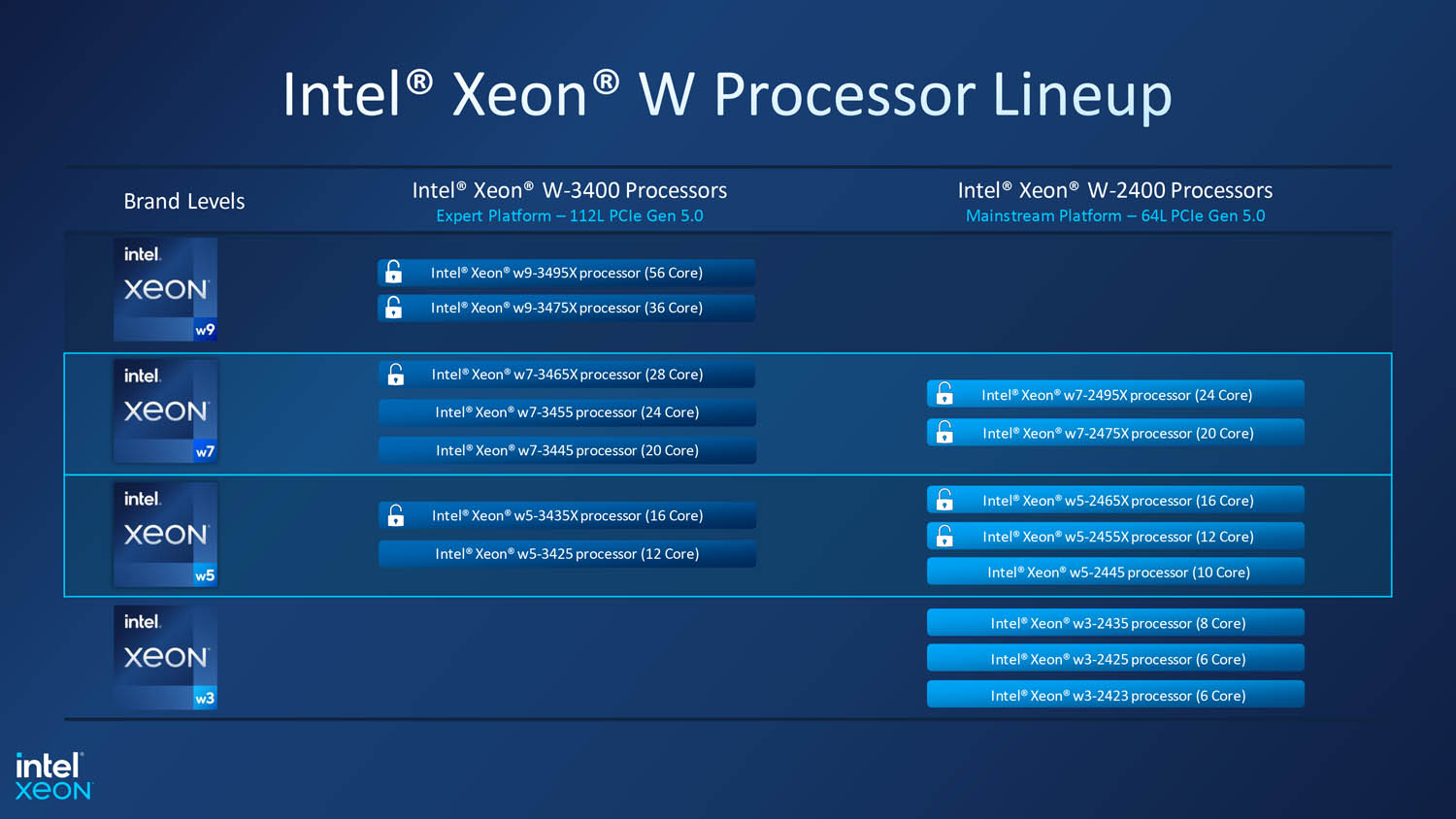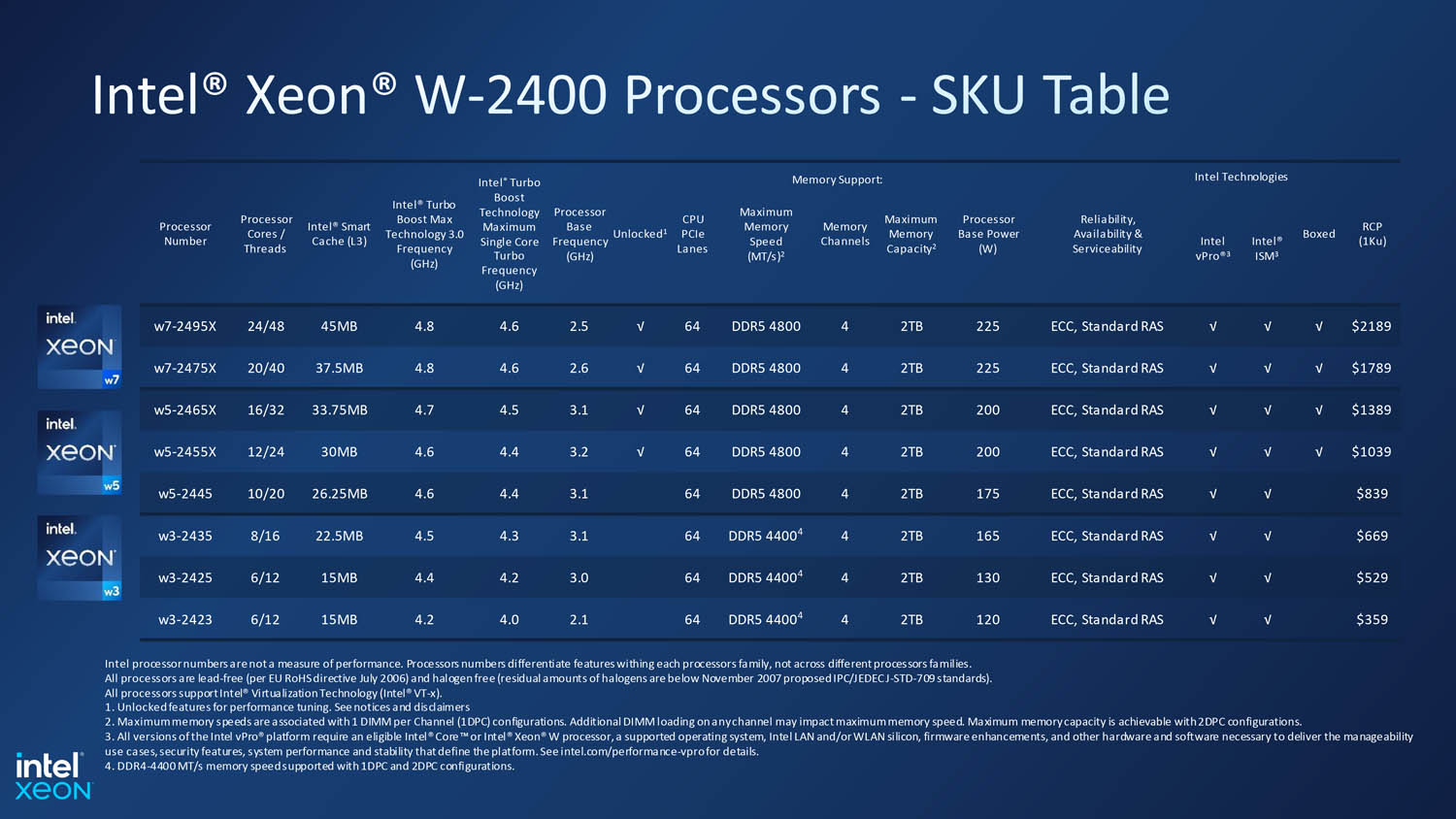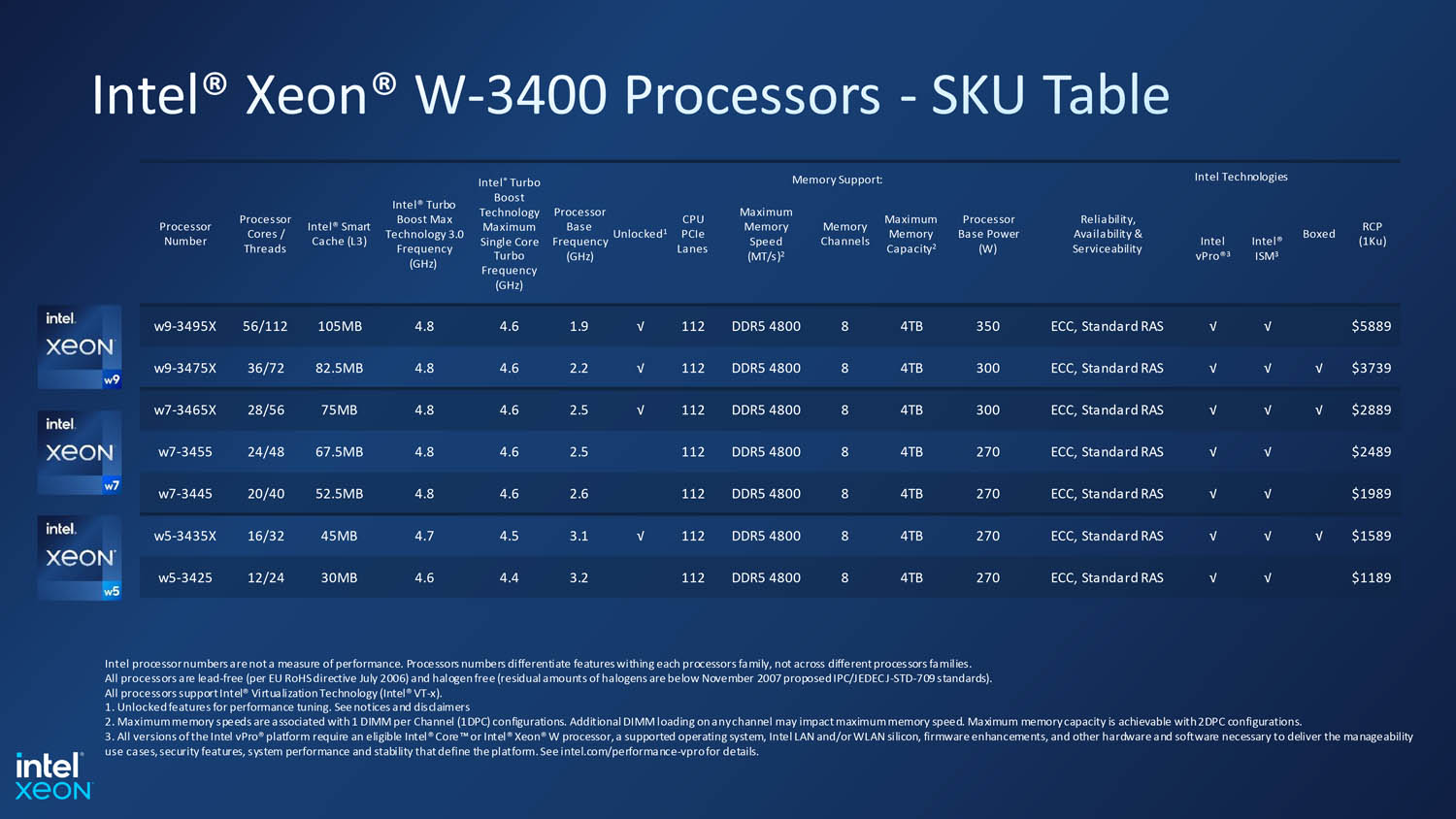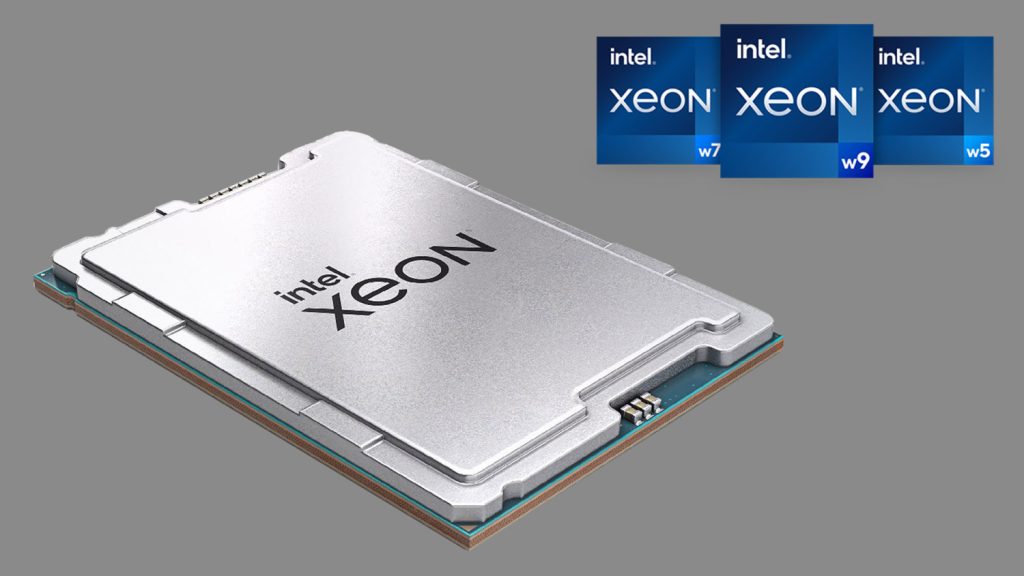Intel finally has some workstation CPUs to fight back against AMD Ryzen Threadripper Pro 5000
Intel has launched its long awaited ‘Sapphire Rapids’ Intel Xeon W-2400 and Xeon W-3400 single socket workstation processors with up to 56 cores – considerably more than the previous generation.
These are the first workstation-specific processors from Intel in some time and will enable Intel to compete more strongly with the AMD Ryzen Threadripper Pro 5000 WX-Series in demanding AEC workflows that benefit from more cores, more memory or higher memory bandwidth, such as visualisation and simulation.
The Intel Xeon W-2400 and Xeon W-3400 series will be of less interest to users of CAD or BIM software, who should be better served by 13th Gen Intel Core processors. Intel’s entry-level CPU family generally has fewer cores and less memory bandwidth, but higher clock speeds and higher Instructions Per Clock (IPC), which are important for single threaded performance.
Until now, Intel simply has had nothing that can compete at the high-core count, high memory bandwidth end of the workstation market.
The new Intel Xeon processors will form the foundation for new mid-range and high-end desktop workstations from Dell, HP, Lenovo, Fujitsu, Supermicro, BOXX, Puget Systems and others.
The Intel Xeon W-2400 Series is classified as a ‘mainstream’ workstation processor with eight models ranging from 6 to 24 cores. Meanwhile, the Intel Xeon W-3400 Series is for ‘experts’ with seven models ranging from 12 to 56 cores.
The new processors are comprised entirely of ‘Golden Cove’ cores; they do not have the hybrid Performance Core (P-Core) / Efficiency Core (E-core) architecture pioneered by 12th Gen and 13th Gen Intel Core processors.
Beyond the number cores, there are some significant differences between the two processor families. Compared to the Intel Xeon W-2400, the Intel Xeon W-3400 has more memory channels (8 vs 4), more memory capacity (4 TB vs 2 TB), more PCIe lanes (112 vs 64) (so it can support more add-in GPUs), more Intel Smart Cache (L3) and a higher max base power (350W vs 225W).
As a first for Xeon processors, certain models – those with an X suffix – are unlocked so the processor can be overclocked. A range of tuning features will be made available through the Intel Extreme Tuning Utility (Intel XTU). While it’s unlikely that major OEMs will go down the overclocking route, this level of control could leave the gates open for specialist workstation manufacturers such as Armari and BOXX to differentiate themselves by squeezing more performance out of the platform.
You can see the full specs in the tables below.



Among the Intel Xeon W-2400 Series, the processors that stand out are the Xeon w7-2495X and w7-2475X which combine high core counts with the highest boost frequencies. The lower-end models may well be suited to engineering simulation – applications that tend to benefit from higher memory bandwidth but don’t necessarily take advantage of lots of cores. They can also provide a platform for multi-GPU workflows, such as GPU rendering.
There’s a similar pattern with the Intel Xeon W-3400 Series with the higher end models featuring the largest number of cores and highest boost frequencies. The range tops out with the 56-core Intel Xeon w9-3495X with a base frequency of 1.9 Ghz and a Turbo Boost Max 3.0 of 4.80 GHz. The lower end CPUs in the family, such as the Intel Xeon w5-3425, could offer similar potential benefits for engineering simulation, plus support for even more GPUs.
Meanwhile, the platform supports the latest technologies including PCIe Gen 5, DDR5 memory and Intel WiFi 6E.
The introduction of the single socket, high core count Intel Xeon W-2400 and Xeon W-3400 does not spell the end for dual processor workstations. Intel has stated that workstations with dual ‘Sapphire Rapids’ 4th Gen Intel Xeon Scalable processors (2 x 350W) will also be available.
What AEC Magazine thinks
While Intel has done a great job with 12th and 13th Gen Intel core, it’s essentially been four years since the company had a new workstation processor for anything other than entry-level workflows like CAD. Yes there was the Intel W-3300 Series in 2021, but this ‘Icy Lake’ processor was not taken up by any of the major workstation OEMs.
Remarkably, there are still workstations on sale with 2019 ‘Cascade Lake’ Xeon processors. In fact, the soon to be replaced HP Z4 G4 and Dell Precision 5820 date back to 2017.
As Intel’s workstation business has stuttered, AMD has grabbed the opportunity with both hands. Over the last few years, it has celebrated OEM wins with AMD Ryzen Threadripper Pro, including the Lenovo ThinkStation P620 and Dell Precision 7865 Tower.
Intel simply has had nothing that can compete at the high-core count, high memory bandwidth end of the market.
To this backdrop, the importance to Intel of ‘Sapphire Rapids’ Xeon W-2400 and Xeon W-3400 being a success cannot be overstated.
With a total of 17 models covering all different specs and price points, Intel certainly has a broad range of processors to take on the five Threadripper Pro CPUs currently available. On paper, the Xeon W-2400 Series looks well placed to bridge a gap between AMD Ryzen and AMD Ryzen Threadripper Pro in workflows that might benefit from more memory bandwidth or more PCIe lanes.
We look forward to getting our hands on the new Intel Xeon W-2400 and Xeon W-3400 workstations in the coming months.
HP is among the first workstation OEMs to launch ‘Sapphire Rapids’ workstations.
Learn more about the new HP Z4, Z6, Z8 and Z8 Fury G5 editions






